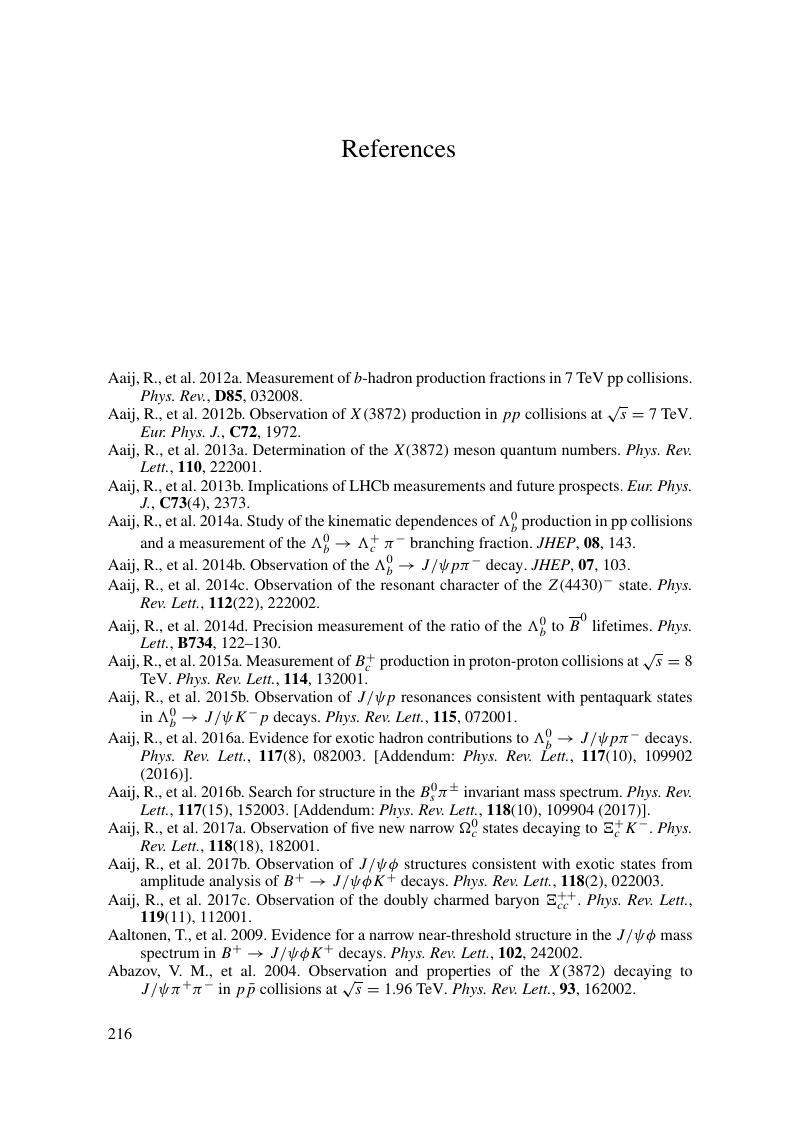Book contents
- Frontmatter
- Contents
- Preface
- 1 Introduction
- 2 XYZ and Pc Phenomenology
- 3 Color Forces and Constituent Quark Model
- 4 Hadron Molecules
- 5 Light Scalar Mesons
- 6 Mass Formulae for P-Wave, qq Mesons
- 7 Compact Tetraquarks
- 8 The Xu − Xd Puzzle
- 9 Y States as P -Wave Tetraquarks
- 10 Pentaquark Models
- 11 Tetraquarks in Large N QCD
- 12 QCD Sum Rules and Lattice QCD
- 13 Phenomenology of Beauty Quark Exotics
- 14 Hidden Heavy Flavor Tetraquarks: Overview
- 15 Tetraquarks with Double Heavy Quarks
- 16 Outlook
- Appendix A Low Energy p - n Scattering Amplitude
- Appendix B Wigner’s 6-j Symbols
- Bibliography
- Index
- References
Bibliography
Published online by Cambridge University Press: 19 April 2019
- Frontmatter
- Contents
- Preface
- 1 Introduction
- 2 XYZ and Pc Phenomenology
- 3 Color Forces and Constituent Quark Model
- 4 Hadron Molecules
- 5 Light Scalar Mesons
- 6 Mass Formulae for P-Wave, qq Mesons
- 7 Compact Tetraquarks
- 8 The Xu − Xd Puzzle
- 9 Y States as P -Wave Tetraquarks
- 10 Pentaquark Models
- 11 Tetraquarks in Large N QCD
- 12 QCD Sum Rules and Lattice QCD
- 13 Phenomenology of Beauty Quark Exotics
- 14 Hidden Heavy Flavor Tetraquarks: Overview
- 15 Tetraquarks with Double Heavy Quarks
- 16 Outlook
- Appendix A Low Energy p - n Scattering Amplitude
- Appendix B Wigner’s 6-j Symbols
- Bibliography
- Index
- References
Summary

- Type
- Chapter
- Information
- Multiquark Hadrons , pp. 216 - 230Publisher: Cambridge University PressPrint publication year: 2019

